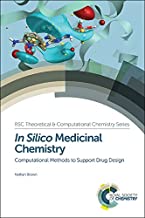In Silico Medicinal Chemistry: Computational Methods to Support Drug Design
Original price was: ₹18,201.30.₹14,561.04Current price is: ₹14,561.04.
ISBN: 9781782621638
Author/Editor: Nathan Brown
Publisher: Royal Society of Chemistry
Year: 2016
Available on backorder
Description
Covering computational tools in drug design using techniques from chemoinformatics, molecular modelling and computational chemistry, this book explores these methodologies and applications of in silico medicinal chemistry. The first part of the book covers molecular representation methods in computing in terms of chemical structure, together with guides on common structure file formats. The second part examines commonly used classes of molecular descriptors. The third part provides a guide to statistical learning methods using chemical structure data, covering topics such as similarity searching, clustering and diversity selection, virtual library design, ligand docking and de novo design. The final part of the book summarises the application of methods to the different stages of drug discovery, from target ID, through hit finding and hit-to-lead, to lead optimisation. This book is a practical introduction to the subject for researchers new to the fields of chemoinformatics, molecular modelling and computational chemistry.
Additional information
| Weight | 0.504 kg |
|---|
Product Properties
| Year of Publication | 2016 |
|---|---|
| Table of Contents | Introduction; Chemistry and Graph Theory; Structure Representation; Molecular Similarity; Molecular Property Descriptors; Topological Descriptors; Topographical Descriptors; Statistical Learning; Similarity Searching; Bioisosteres and Scaffolds; Clustering and Diversity; Quantitative Structure-Activity Relationships; Protein-Ligand Docking; De Novo Molecular Design; Applications in Medicinal Chemistry; Summary and Outlook. |
| Author | Nathan Brown |
| ISBN/ISSN | 9781782621638 |
| Binding | Hardback |
| Edition | 1 |
| Publisher | Royal Society of Chemistry |
You must be logged in to post a review.






Reviews
There are no reviews yet.